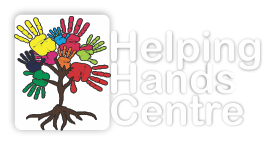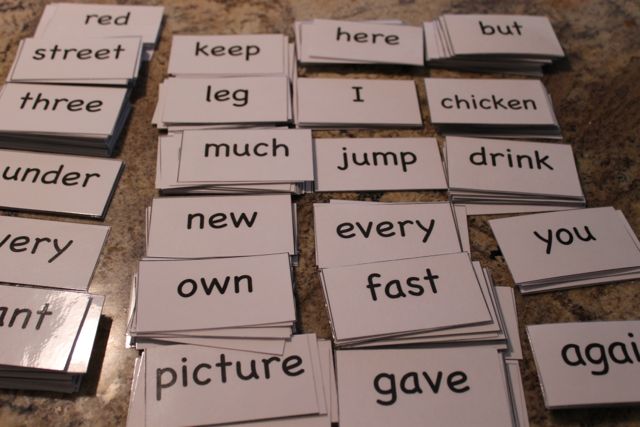Speech activities to foster listening skills and speech development for your baby
There are many activities that parents can use to encourage speech and language development with their children. Language is best learned while doing something; allow the child to be exposed to new experiences and talk about them before, during and after the event. Speak to your child in short simple sentences. Talk about what you are doing, thinking and planning. Talk about the here and now. You are a language model for your child! Try to model language for your child to learn. At first he will imitate words; later he will speak spontaneously on his own. Praise all of the child’s efforts to communicate. Play should be open-ended as one can use toys in a variety of ways to prompt language. Below is a list of recommended activities:
Imitating actions and sounds – Have the child imitate early sounds such as “ba,” “ma,” “pa,” “da,” and “na” after your model; have child imitate actions such as clapping hands, and imitate animal sounds, i.e. dog, cow and sheep.
Reading to your child – Read books to your child frequently (simple books, with colorful pictures). When reading a simple story, do not read all the words on the page. Scale it down to 1-3 words, label the picture, describe and talk about the pictures, and have the child point to/identify common objects in the picture.
Talking to your child – Use simple vocabulary to comment or describe everyday activities with your child such as making the bed, shopping for groceries, picking up toys, washing hands, getting dressed, and taking a bath. You should also comment on what you are about to do and include child in all activities while speaking about it.
Setting up environments that tempt the child to want to speak – Activities include eating a child’s desired food in front of him, holding a toy he often likes to play with, and opening a jar of bubbles and waiting for your child to request the bubbles.
Using a large, sturdy unbreakable mirror – Have the child face the mirror and look at himself; talk to your child about what he sees, i.e. “look, I see your eyes.”
Cooking – Cooking and food preparation are great ways to work on language. For example, make an ice cream sundae, label objects needed and have the child actively involved in the preparation.
Singing songs and accompany the songs with actions of the song – Singing simple songs and nursery rhymes show patterns and rhythms of speech.
Going to the park/playground – Most children enjoy playing on the equipment, such as slides. You can describe and comment on the child’s activities, i.e. “down the slide” etc. 9
Offering your child a choice of two different toys – Follow the child’s lead. Try to sit at your child’s level while interacting and playing with toys; sit on the floor or at a small table and chairs. Use this time to model/prompt language and vocabulary.
Using dolls/dollhouse with furniture – Pretend with your child; have the dolls do different actions (imaginative play) such as sleeping, eating, walking, or pushing. Name the actions and have your child imitate words after you while performing the actions. You can also have child follow simple commands within this activity using the toys, i.e. “put the baby in the bed,” “push baby” etc. Make sure you have little tables, chairs, people, vehicles, food etc. to use in play. Using blocks/puzzles/play-dough – Hold back pieces or build something together. Using zoo/farm/pirate ship/garage (with manipulative) – For imaginative play, have your child identify/label/describe objects and actions.
Playing turn-taking activities – Roll a ball to each other, take turns blowing bubbles, or help your child listen and follow directions by playing games such as “David Says…touch your mouth.”
From day one, your baby is listening to you intently to eventually communicate with you. Those listening skills will then turn into eye contact, cries, smiling, giggling, babbling, and more. In fact, your baby’s first communication begins with crying. Have you ever noticed your baby cries differently for different needs? Different cries are baby’s way of communicating with you!
But how do a baby’s cries develop into speech? By the age of one, your baby will develop both nonverbal and verbal language skills to communicate.
Age 0 to 2 Years
• Encourage your baby to make vowel-like and consonant-vowel sounds such as “ma,” “da,” and “ba.”
• Reinforce attempts by maintaining eye contact, responding with speech, and imitating vocalizations using different patterns and emphasis. For example, raise the pitch of your voice to indicate a question.
• Imitate your baby’s laughter and facial expressions: Teach your baby to imitate your actions, including clapping you hands, throwing kisses, and playing finger games such as pat-a-cake, peek-a-boo, and the itsy-bitsy-spider.
• Talk as you bathe, feed, and dress your baby. Talk about what you are doing, where you are going, what you will do when you arrive, and who and what you will see. Identify colors, count items.
• Use gestures such as waving goodbye to help convey meaning: Introduce animal sounds to associate a sound with a specific meaning: “The doggie says woof-woof.”
• Acknowledge the attempt to communicate: Expand on single words your baby uses: “Here is dada. Mama loves you. There is the baby? Here is baby.”
• Read to your child. Sometimes “reading” is simply describing the pictures in a book without following the written words. Choose books that are sturdy and have large colorful pictures that are not too detailed. Ask your child, “What’s this?” and encourage naming and pointing to familiar objects in the book.
Age 2 to 4 Years
• Speak clearly to your child. Model good speech.
• Repeat what your child says to show that you understand. Add on to what she says. Use words like, “Want tea? I have tea. I have orange juice. Do you want orange juice?”. It’s okay to use baby talk sometimes. Be sure to use the adult word too. For example, “It is time for din-din. We will have dinner now.”
• Cut out pictures of favorite or familiar things. Put them into categories, like things to ride on, things to eat, and things to play with. Make silly pictures by mixing and matching pictures. Glue a picture of a dog behind the wheel of a car. Talk about what is wrong with the picture and ways to “fix” it.
• Help your child understand and ask questions. Play the yes–no game. Ask questions such “Are you Peter?” and “Can a horse fly?” Have your child make up questions and try to fool you.
• Ask questions that include a choice. “Do you want an apple or an orange?” “Do you want to wear your red shirt or your blue shirt?”
• Help your child learn new words. Name body parts, and talk about what you do with them. “This is my eyes. I can see the chair, table and book.”
• Sing simple songs, and say nursery rhymes. This helps your child learn the rhythm of speech.
• Place familiar objects in a box. Have your child take one out and tell you its name and how to use it. “This is my book. I read it.”
• Show pictures of familiar people and places. Talk about who they are and what happened. Try making up new stories.
Age 4 to 6 Years
When your child starts a conversation, give your full attention whenever possible. Make sure that you have your child’s attention before you speak.
• Acknowledge, encourage, and praise all attempts to speak. Show that you understand the word or phrase by fulfilling the request, if appropriate.
• Pause after speaking. This gives your child a chance to continue the conversation. Continue to build vocabulary. Introduce a new word and offer its definition, or use it in a context that is easily understood. This may be done in an exaggerated, humorous manner. “I think I will drive the vehicle to the store. I am too tired to walk.”
• Talk about spatial relationships (first, middle, and last; right and left) and opposites (up and down; on and off).
• Offer a description or clues, and have your child identify what you are describing: “We use it to sweep the floor” (a broom). “It is cold, sweet, and good for dessert. I like strawberry” (ice cream).
• Work on forming and explaining categories. Identify the thing that does not belong in a group of similar objects: “A shoe does not belong with an apple and an orange because you can’t eat it; it is not round; it is not a fruit.”Help your child follow two- and three-step directions: “Go to your room, and bring me your ball.”
• Encourage your child to give directions. Follow his or her directions as he or she explains how to build a tower of blocks.
• Play games with your child such as “house.” Exchange roles in the family, with your pretending to be the child. Talk about the different rooms and furnishings in the house.The television also can serve as a valuable tool. Talk about what the child is watching. Have him or her guess what might happen next. Talk about the characters. Are they happy or sad? Ask your child to tell you what has happened in the story. Act out a scene together, and make up a different ending.
• Take advantage of daily activities. For example, while in the kitchen, encourage your child to name the utensils needed. Discuss the foods on the menu, their color, texture, and taste. Where does the food come from? Which foods do you like? Which do you dislike? Who will clean up? Emphasize the use of prepositions by asking him or her to put the napkin on the table, in your lap, or under the spoon. Identify who the napkin belongs to: “It is my shoe.” “It is mummy’s.” “It is Peter’s.”
• While shopping for groceries, discuss what you will buy, how many you need, and what you will make. Discuss the size (large or small), shape (long, round, square), and weight (heavy or light) of the packages.
Repetition is very important! Remember to use language that is clear, consistent and simple so the child can understand what is being said to him and he can try to imitate or say words targeted. Make speaking and listening experiences enjoyable for your child. One must try to create not only fun environments, but also ones that are language learning opportunities

